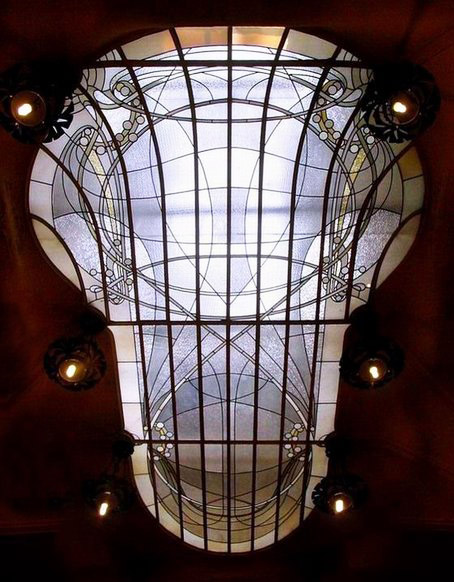Hector Guimard
Download PDFHector Guimard (Lyon 1867 – New York 1942) is one of the most prominent representatives of the Art Nouveau style. His prolific creative activity left us with an architectural and decorative legacy that spans 15 years of work.
During his years of study he was influenced by the theories of Eugene-Emmanuel Viollet-le-Duc who in 1863 lay down the foundations of the future structural principles of the Art Nouveau, combining the medieval heritage of the geometrical volumes of the structure with the Art Nouveau lines – clearly shown in Guimard’s first architectural success, the Castel Béranger.
Guimard’s visit to Victor Horta’s hotel Tassel in Belgium, definitely converted him to the organic “whiplash” style lines.
Through his aesthetic research he favoured harmony and stylistic continuity one of the founding principals of the Art Nouveau style. This led him to design the whole interior of his buildings. For example the furniture designed for an oval shaped room became an integral part of the building (especially in the hotel Guimard, 1909).
Some of his famous buildings in Paris are: Hôtel Roszé (1891), Hôtel Delfau and Jassedé (1894); Atelier Carpeaux (1895); Hôtel Deron-Levet (1905); Trémois building (1909); Hôtel Mezzara (1910) or the Villa Flore (1924), but also the Coilliot house in Lille (1898); and the Castel Val in Auvers-sur-Oise (1903).
The Art Nouveau style used the potentials of iron to develop cast iron foliage motifs that spread throughout public gardens and facades of buildings (grills, guardrails, handrails, drainpipes) and the decorative arts. Guimard is one of the last to use cast iron in an industrial fashion in numerous projects, such as the entrances to the Paris Metro that were cast by the Val d’Osne foundry. This architectural genius used Viollet-le-Duc’s principles of ornamental structure in these famous Paris Métro porticos creating quite a scandal at the time, but bringing a new life to artistic cast iron. The Société des fonderies de Bayard et de Saint-Dizier (Haute-Marne) cast most of his creations and published a catalogue of cast iron elements Fontes artistiques pour constructions, fumisterie, articles de jardin et de sépulture, style Guimard.(Artistic cast iron for construction, heating, garden and burial elements, Guimard style). Focusing on every detail, Guimard used artistic cast iron elements to complete his architecture, a balcony railing became an integral part of the building, thus combining the practical with the visual, in adherance with his ideal of formal continuity.
- Picture 1: detail of entrance of Hôtel Jassedé, 1903.
- Picture 2: detail of stairway hand rail, Hôtel Jassedé, 1903.
- Picture 3: extraordinary wrought iron supporting elements for a gutter pipe, Hôtel Jassedé 1903.







